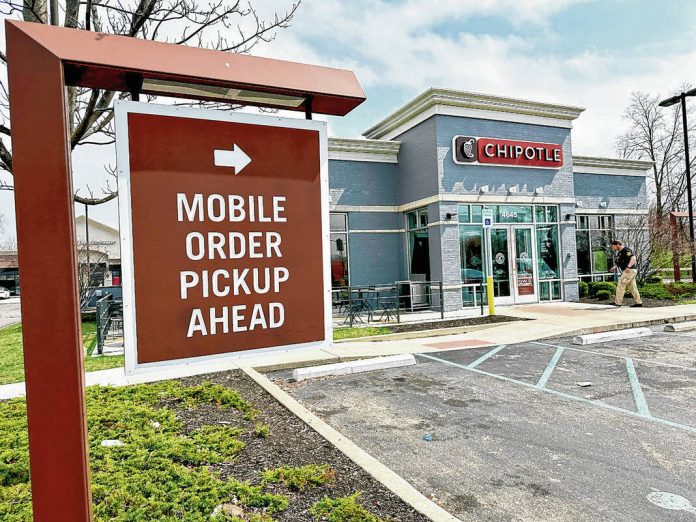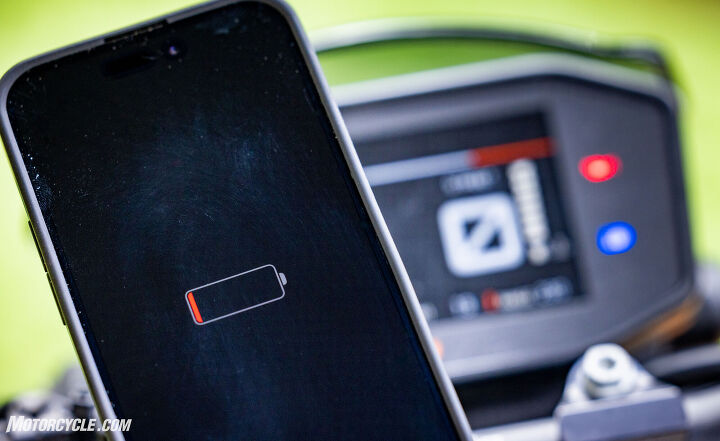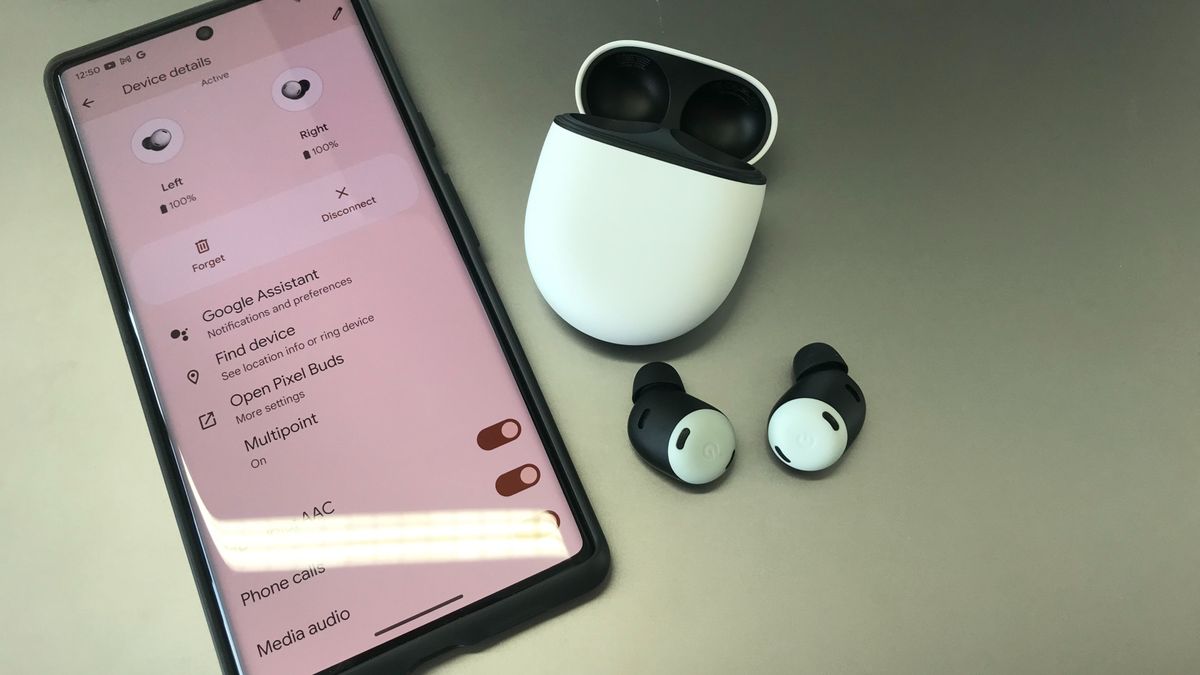Destination delicious: Mobile tech drives dining changes, and restaurants try to get orders ready sooner


INDIANAPOLIS — Stale, soggy food isn’t appetizing, says Chris Baggott, CEO of ClusterTruck. That’s why the Indianapolis company pioneered the “ghost kitchen” concept of preparing food exclusively for timely delivery.
By using technology to determine when drivers will pick up orders and serving limited geographic areas, the company assures that no delivered ClusterTruck meal is more than 10 minutes old.
Conventional restaurants have worked to modify parts of their business to meet similar goals for pickup orders since ClusterTruck launched in 2015. The pandemic only accelerated the adoption of mobile apps and touch-screen kiosks, but that doesn’t mean everyone is happy with the new ways of doing business.
In a 2022 survey of more than 1,500 adults titled “The State of What Feeds Us,” location technology firm Bluedot pinpointed three frustration trends associated with mobile order fulfillment: “order is cold,” “order is inaccurate,” and “staff is preoccupied.”
More than 45{38557cf0372cd7f85c91e7e33cff125558f1277b36a8edbab0100de866181896} of respondents cited cold food in February 2022. More than 40{38557cf0372cd7f85c91e7e33cff125558f1277b36a8edbab0100de866181896} didn’t receive the food they expected, and more than 20{38557cf0372cd7f85c91e7e33cff125558f1277b36a8edbab0100de866181896} said they encountered inattentive restaurant employees.
Judy Chan, Bluedot’s vice president of marketing, said restaurants are refining approaches to improve the consumer experience. By September 2022, “order is cold” complaints dipped below 35{38557cf0372cd7f85c91e7e33cff125558f1277b36a8edbab0100de866181896}.
“Many restaurant brands have integrated or are in the process of integrating location technology into their mobile apps, which is key to ensuring orders are prepared at the right time and ready when customers arrive — whether that’s at a mobile pickup spot or at the drive-thru window,” Chan said.
Fast food and fast casual restaurant chains are experimenting with concepts that exclusively serve food to go. McDonald’s opened a digital-only drive-thru restaurant in Texas in December. Chipotle operates “Chipotlane Digital Kitchens” that serve customers at drive-thru and walk-up windows in Ohio and Maryland.
Among 20 Chipotle locations in central Indiana, six feature “Chipotlanes” for app and online orders. Customers don’t speak into an intercom system or wait in a line of vehicles when placing orders. A Chipotle planned at 905 N. Green St. in Brownsburg will include a Chipotlane in addition to the restaurant’s conventional dining room.
A Chipotle spokesperson told IBJ that in-restaurant dining accounted for approximately 60{38557cf0372cd7f85c91e7e33cff125558f1277b36a8edbab0100de866181896} of the company’s business in 2022, while off-premises dining accounted for about 40{38557cf0372cd7f85c91e7e33cff125558f1277b36a8edbab0100de866181896}.
“We have seen strong growth in off-premises dining and have innovated our digital offerings to support this channel’s growth,” the spokesperson wrote in an email. “However, our in-restaurant experience is just as important.”
McDonald’s is the restaurant industry’s undisputed leader in mobile apps, racking up 40 million downloads in 2022, according to data company Apptopia. The next three companies on the year’s top 10 chart—Starbucks, Domino’s and Taco Bell—combined for 34.6 million downloads.
James Poore and his wife, Pam, own six McDonald’s locations in Indianapolis. He said the app’s popularity is guiding the business.
“Over the last three or four years, our customers have shown us that this is what they want,” Poore said. “This is how they want to handle transactions. And as long as it suits the customers, we’re going to follow the customer.”
Built for delivery
Last summer, ClusterTruck spun off its software platform into a stand-alone business called Empower Delivery. Baggott said Empower intends to work with independently owned restaurant groups that are ready to launch “ghost kitchen” operations and not have relationships with third-party delivery providers.
“No one is ordering from DoorDash for any kind of culinary experience,” Baggott said. “It’s for convenience. As soon as something better comes along, people switch to it. That’s what we’ve proven with ClusterTruck in three states.”
In addition to ClusterTruck kitchens in downtown Indianapolis, Broad Ripple and Castleton, the company has locations in Columbus, Ohio, and Kansas City, Missouri.
Meredith Sandland, CEO of Empower Delivery, is a former Yum! Brands executive who has co-written two books based on the transformation of the restaurant industry: 2021’s “Delivering the Digital Restaurant: Your Roadmap to the Future of Food” and the newly published “Delivering the Digital Restaurant: The Path to Digital Maturity.”
Sandland and co-author Carl Osbourn wrote in the second book that “digitally native” restaurants are emerging as a business model different from fast food, casual dining or fast casual styles.
For starters, digitally native restaurants pay less for labor and real estate by focusing on delivery. From the consumer’s perspective, engagement with the restaurant happens solely in a digital space.
Baggott said ClusterTruck is “ground zero of ghost kitchens,” although he’s not a fan of the term “ghost kitchen.” Tangible things happen at ClusterTruck, which he describes as a purpose-built, delivery-only kitchen.
“We get people here weekly, coming from all over the world to study what we’re doing,” he said.
App of the arches
If you’ve visited a McDonald’s recently, you likely have seen or heard a reference to the company’s mobile app.
Mya Smith, owner of six McDonald’s locations in Indiana, said customers use the app to make 27.4{38557cf0372cd7f85c91e7e33cff125558f1277b36a8edbab0100de866181896} of orders at the company’s restaurants in the Indianapolis metropolitan area. By 2024, the goal is to increase the app’s usage to 40{38557cf0372cd7f85c91e7e33cff125558f1277b36a8edbab0100de866181896}.
“Everybody is walking around with a phone and with apps,” Smith said. “We want to be there. We want to be in your hands at all times. Just a part of your life, period.”
Smith and fellow McDonald’s franchisee Poore credited meal collaborations with celebrities such as Travis Scott and Mariah Carey for driving downloads of the app. This year, rappers Cardi B and Offset devised a customized meal that customers could order in conjunction with Valentine’s Day.
App usage, Smith said, provides data McDonald’s can use to tailor incentives and deals for customers.
Poore said app users might find they can place an order, walk into a McDonald’s, pick up their food and be on their way while other customers wait in a drive-thru line.
“We’re going to have your food when you get here in the lobby,” Poore said. “You won’t have to wait behind those cars in the drive-thru that have not ordered yet. It’s a little different thinking, but we have our customers understanding that, if timeliness and speed are your main thing, you’ll want to do it on the app.”
Regarding self-ordering kiosks that arrived in McDonald’s lobbies in 2018, Poore said the touch-screen devices were crucial during the pandemic.
“We would not have been as successful through the pandemic without those kiosks,” Poore said. “Even today, we don’t have enough employees to always open a front-counter register. Having the kiosk there and customers having the option to come and enter their own order has been a brand saver for us.”
Smith said the kiosks reduce customer frustration and add to the company’s bottom line.
“It really helps with accuracy because (customers) get a chance to select exactly what items they want and what items they don’t want,” she said. “Then when you see the pictures, it allows you to say, ‘You know what? I would like to get some dessert.’ I have noticed that the average check on the kiosk is much higher than when an order is placed through the drive-thru or at the front counter.”
Faster, fresher
ClusterTruck bills itself as “America’s first delivery-only kitchen.” Baggott credits Domino’s Pizza, however, as a trailblazer.
Since 1960, the Michigan-based pizza chain has focused on delivery and carryout, or “delco” in restaurant-industry jargon.
In 1973, Domino’s launched its “30 minutes or it’s free” promotion, which was discontinued in the United States after traffic accidents involved delivery vehicles.
In the 21st century, GrubHub emerged as a food delivery service that partners with contract drivers and more than 300,000 restaurants. Competitors in this field include DoorDash, Uber Eats and Postmates.
Tech companies that have developed digital ordering systems for restaurants include Olo, Toast and Lunchbox.
When Baggott co-founded ClusterTruck with Dan McFadden, they wanted to beat the clock.
“The problem we set out to solve is the time problem,” Baggott said. “Old food isn’t going to taste good. When you order with DoorDash, and it takes 45 minutes to get your order, that food was done five minutes into that order.”
ClusterTruck uses technology to know the location of delivery drivers (who are employees of the company as opposed to being independent contractors).
“The system doesn’t allow the food to be cooked until we know exactly where the driver is,” Baggott said. “If I’m making pad thai, which takes six minutes to make, and I know my driver is 20 minutes from the kitchen, we don’t start cooking it until the driver is six minutes from the kitchen.”
Conventional restaurants use location technology to know the proximity of customers who are on the way, said Chan, the Bluedot executive.
“Mobile technology in particular is already helping restaurants deliver food at the right time,” Chan said. “When a store can see when the customer is nearby, staff knows when to begin preparing the order and have it ready and say ‘Hello’ to the customer the moment they walk through the door or arrive at the drive-thru window.”
Riding with ClusterTruck
Baggott said about 35{38557cf0372cd7f85c91e7e33cff125558f1277b36a8edbab0100de866181896} of ClusterTruck orders are placed through the company’s mobile app, which isn’t necessarily more important than clustertruck.com as a doorway to the business.
He said the website is just as efficient for customer-company interaction.
As a co-founder of ExactTarget and years as a tech innovator, Baggott has decades of experience in analyzing data.
“When you have online orders, you’re able to capture much more data,” he said. “When I go into McDonald’s, they don’t know anything about me. But when I order online, whether it’s through an app or just online, now you know my phone number and you know my address. Now you know what I ordered so you can track me and make content more relevant to me, which is a good thing.”
With more than 3 million meals delivered to customers, ClusterTruck’s next step is likely to franchise locations in other cities, Baggott said, and possibly in parts of central Indiana not served by the existing kitchens.
Baggott said it would be important for franchisees to maintain ClusterTruck’s ability to prepare 90 different menu items at a high level of quality.
Customer service is one more component that hinges on data harvested at the website and app.
“If I have a customer that’s ordered 300 times and they have a problem, that’s going to get a lot more urgency in our system than someone who orders once a year and complains every time they order,” Baggott said. “That kind of data is critical.”








